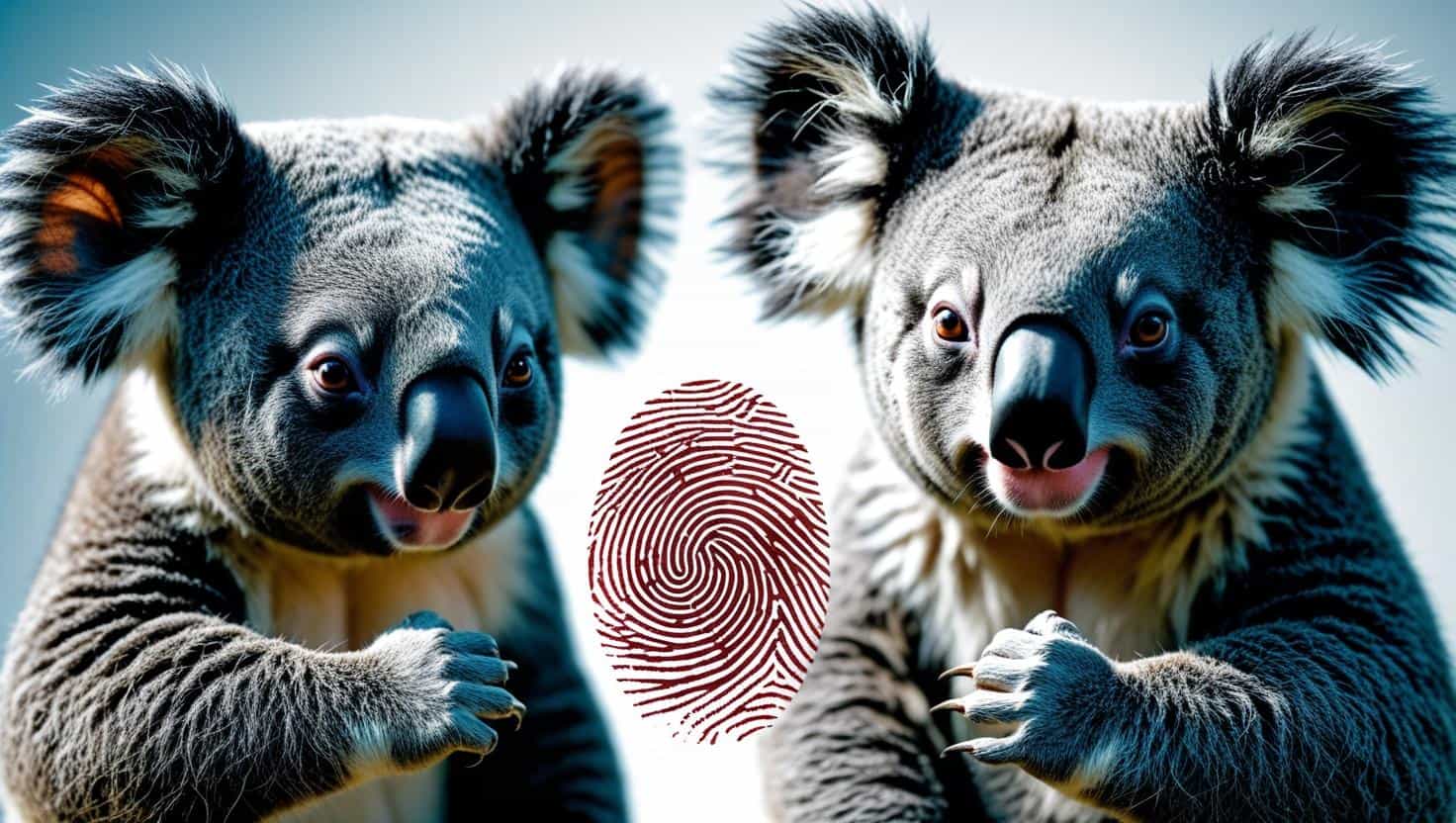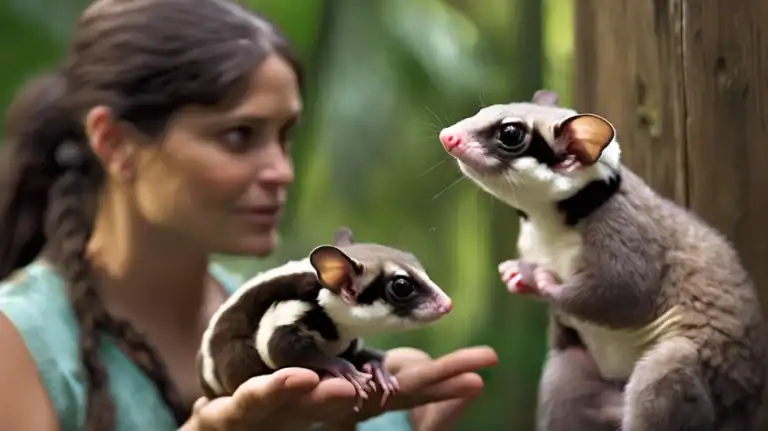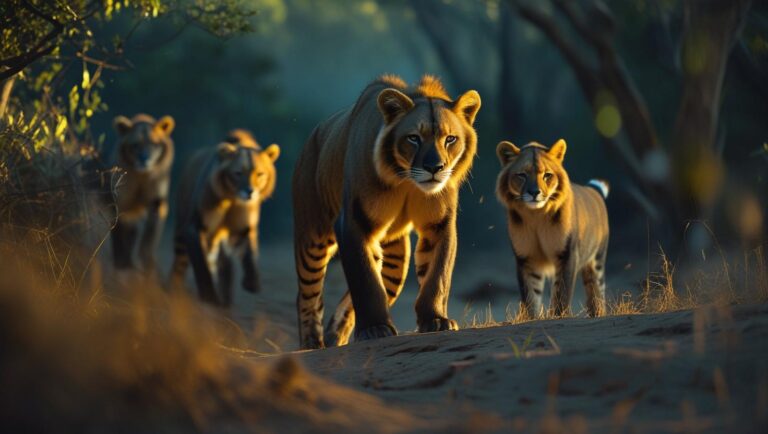Imagine a detective carefully dusting for fingerprints at a crime scene, only to discover prints that look exactly like human ones. Now, imagine those prints belong to a koala. It sounds like something out of a quirky TV show, but this real-life mystery has stumped scientists and police alike. Koala fingerprints match human fingerprints so closely, even under a microscope, that they sometimes trick forensic experts. This unexpected similarity sparks curiosity from animal lovers and crime buffs. What does it mean when a tree-dwelling marsupial shares such a human trait? Let’s explore how science uncovered this odd connection and why it exists in the first place.
How Koala Fingerprints Compare to Human Fingerprints
Fingerprints are tiny ridges on the tips of fingers. In humans, they help with grip and touch. They’re also unique to each person, so distinctive that police use them to catch criminals and prove identities. Here’s the shocking twist: Koalas have fingerprints that almost mirror ours.
If you looked at a koala fingerprint and a human one side by side, you might need a magnifying glass to tell them apart. They share the same whorls, loops, and arches. Even under the high power of a microscope, their patterns are nearly identical.
Scientists and crime scene investigators have stumbled upon this oddity in Australia. There have been actual cases where koala fingerprints have been found mixed with human fingerprints at crime scenes, confusing forensic analysis. Only close examination confirmed the truth—those prints belonged to a marsupial, not a person.
The Function of Fingerprints in Humans and Koalas
Why do they both have fingerprints? In people, those ridges help you grip and have a more refined sense of touch. They assist in grasping slippery objects and in feeling details through our skin.
Koalas have fingerprints, too, for the same reason. Those ridges enable them to grip the smooth bark of trees and scamper through an eucalyptus tree, their favorite food source. The friction in their fingerprints enables them to work more easily in the trees.
Though both need a grip in the trees, koalas lead a rougher life. They have to hang on to leafy branches for dear life. In humans, fingerprints may also have played a role in climbing, using tools, and picking fruit.
Scientific Discovery: How Were Koala Fingerprints Studied?
Scientists uncovered this mystery through a mix of passion, observation, and forensic techniques. Researchers collected prints from koalas and compared them to human prints under powerful microscopes. What they saw stunned them: the loops, arches, and ridges matched almost perfectly.
Forensic analysts in Australia discovered this similarity while investigating crime scenes near koala habitats. When mysterious “human” fingerprints kept turning up in the wild, experts dug deeper and revealed the real, furry culprit. This finding not only solved crime scene puzzles but also broadened our view of how nature repeats itself.
Why Did Koalas and Humans Develop Similar Fingerprints?
This odd parallel is a demonstration of nature repeating itself in two unrelated animals. Koalas aren’t even closely related to humans, so how did they end up with almost identical fingerprints?
The secret is something called convergent evolution. This occurs when distantly related species independently evolve the same traits because they face similar problems and thus require the exact same solutions.
Convergent Evolution: A Case of Similar Solutions
Convergent evolution is like two students from different schools solving a math problem in the same way. Nature pushes for the same answer, even when starting from various points.
Think about how bats and birds both have wings for flying, but they’re not closely related. Shark fins and dolphin flippers look alike, too, even though one is a fish and the other is a mammal. In the case of fingerprints, both koalas and humans needed a better grip to move through their worlds, so nature drew similar blueprints on their fingers.
This goes beyond smooth branches or climbing trees—fingerprints are a clever fix that works, no matter what kind of animal you are.
How Fingerprints Benefit Koalas in the Wild
Koalas spend most of their lives high up in eucalyptus trees, surrounded by leaves and branches. Their fingerprints work like built-in climbing gear.
Fingerprints give koalas:
- Firmer grip when climbing rough or smooth bark
- Control for picking the best leaves, their primary food source
- Dexterity in moving through branches without slipping
Without these prints, a koala would struggle in its leafy home. Picking leaves one by one, a koala needs a steady hold and the ability to sense which leaves are young, fresh, and full of moisture.
For koalas, these ridges aren’t just about staying in the trees; they help the animal eat well and stay safe from predators.
Conclusion
Koalas and humans have fingerprints so alike that they baffle even seasoned scientists. This odd similarity turns out to be a clever solution for both species—one that lives in the treetops, the other that makes tools and navigates the world by touch.
Their shared fingerprint patterns highlight the power of convergent evolution and show how nature sometimes reuses great ideas across very different life forms. The next time you look at your finger, think about the koala quietly munching on leaves in an Australian forest. Does your fingerprint have more in common with wildlife than you ever imagined?
Can you think of other animal quirks that remind you of humans? Nature always finds new ways to surprise us.




![Dog Breed Lifespans: What to Expect and How to Help Your Pup Live Longer [Breed Chart]](https://pawfectonline.com/wp-content/uploads/2025/08/How-to-Help-Your-Pup-Live-Longer-768x434.jpg)








